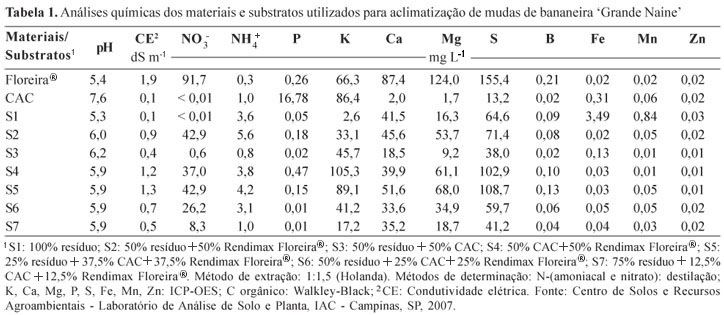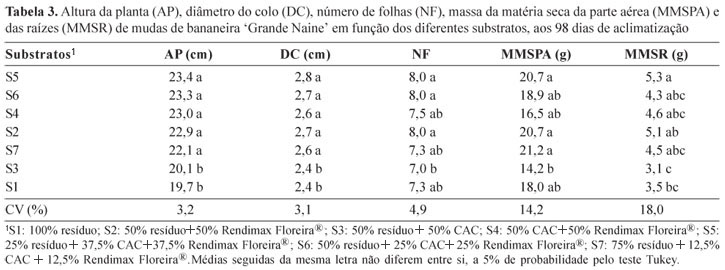Banana is the most cultivated fruit in tropical countries and one of the most consumed in the world. To reach fast development, quality and sanity of banana plants, it is necessary the use of adequate substrate with physical, chemical and biological characteristics for the acclimatization of banana plantlets produced by micropropagation. This study evaluated the effect of different substrates on the development of banana 'Grand Naine' platlets. The experiment was arranged in a randomized block design with seven treatments and four replications. The substrates tested were: T1: 100% of sand residue, T2: 50% of sand residue + 50% of Rendimax Floreira®, T3: 50% of sand residue + 50% of carbonized rice hull, T4: 50% of carbonized rice hull + 50% of Rendimax Floreira®, T5: 25% of sand residue + 37.5% of carbonized rice hull + 37.5% Rendimax Floreira®, T6: 50% of sand residue + 25% of carbonized rice hull + 25% of Rendimax Floreira®, T7: 75% of sand residue + 12.5% of carbonized rice hull + 12.5% Rendimax Floreira®. The variables evaluated included: plant height, pseudostem diameter, leaf number and dry mass of plant roots. All growth data were significant, indicating that mixtures with a maximum proportion of 75 % of mining sand residue can be recommended for the acclimatization of banana 'Grand Naine' plantlets.
Musa spp.; organic matter; propagation



